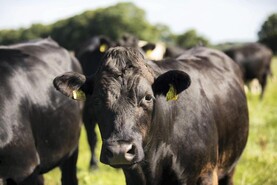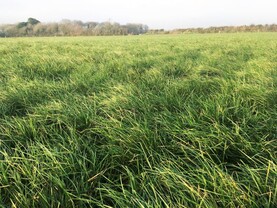Keep an eye on repeat rates for bulls that are out more than three weeks. A high number of repeats could indicate a problem with the bull. Farmers place huge faith in bulls at this time of year. Every year, someone gets stung by a bull firing blanks. Watch bulls for signs of lameness and treat immediately or, better again, give him a holiday and get him replaced.
On bulls, I see a lot of beef bulls out with herds. While the logic of using a beef stock bull is correct, the big fear is with calving difficulty and gestation length. The extra value of a beef calf will be quickly eroded after a hard calving, as the cow will be slower to subsequently go back in calf. The same applies with gestation length. While some beef breeds might calve easily, the last thing you want is for a bull to be carrying an extra few weeks. Best policy is to stick with the early maturing breeds such as Hereford and Aberdeen Angus and select easy calving and short-gestation sire lines from within these breeds.
Maintenance
Now that most farmers have the silage cut and bulls out, it is a chance to catch up on maintenance jobs. We can take lessons from the pig industry who are used to dealing with cyclical price curves. During times of reasonably good pig prices, they catch up on maintenance and replace anything that is faulty or could break down. This means they tend to get away with spending very little on maintenance during bad price years. Use the extra cash that is available with the bigger milk cheques this year to make your business more resilient. Now is also the time to clean out sheds and disinfect them for next season.
Read more
How to manage surging grass growth
Dairy management: animal health
Is feeding meal to calves necessary?
Keep an eye on repeat rates for bulls that are out more than three weeks. A high number of repeats could indicate a problem with the bull. Farmers place huge faith in bulls at this time of year. Every year, someone gets stung by a bull firing blanks. Watch bulls for signs of lameness and treat immediately or, better again, give him a holiday and get him replaced.
On bulls, I see a lot of beef bulls out with herds. While the logic of using a beef stock bull is correct, the big fear is with calving difficulty and gestation length. The extra value of a beef calf will be quickly eroded after a hard calving, as the cow will be slower to subsequently go back in calf. The same applies with gestation length. While some beef breeds might calve easily, the last thing you want is for a bull to be carrying an extra few weeks. Best policy is to stick with the early maturing breeds such as Hereford and Aberdeen Angus and select easy calving and short-gestation sire lines from within these breeds.
Maintenance
Now that most farmers have the silage cut and bulls out, it is a chance to catch up on maintenance jobs. We can take lessons from the pig industry who are used to dealing with cyclical price curves. During times of reasonably good pig prices, they catch up on maintenance and replace anything that is faulty or could break down. This means they tend to get away with spending very little on maintenance during bad price years. Use the extra cash that is available with the bigger milk cheques this year to make your business more resilient. Now is also the time to clean out sheds and disinfect them for next season.
Read more
How to manage surging grass growth
Dairy management: animal health
Is feeding meal to calves necessary?






 This is a subscriber-only article
This is a subscriber-only article









SHARING OPTIONS: